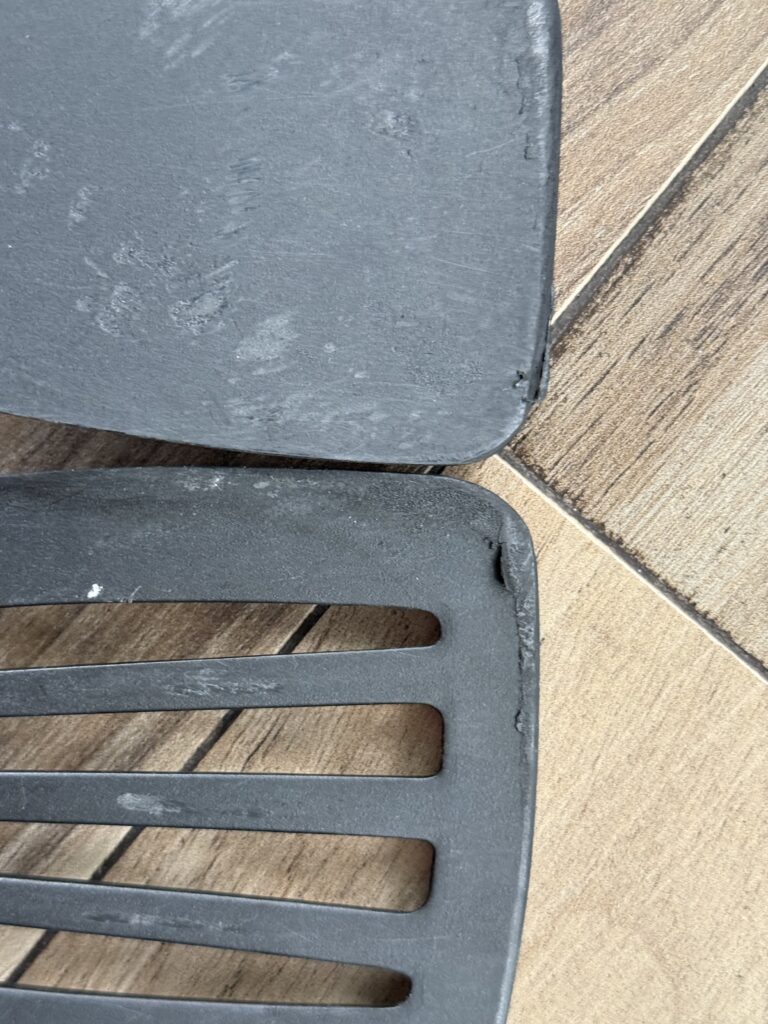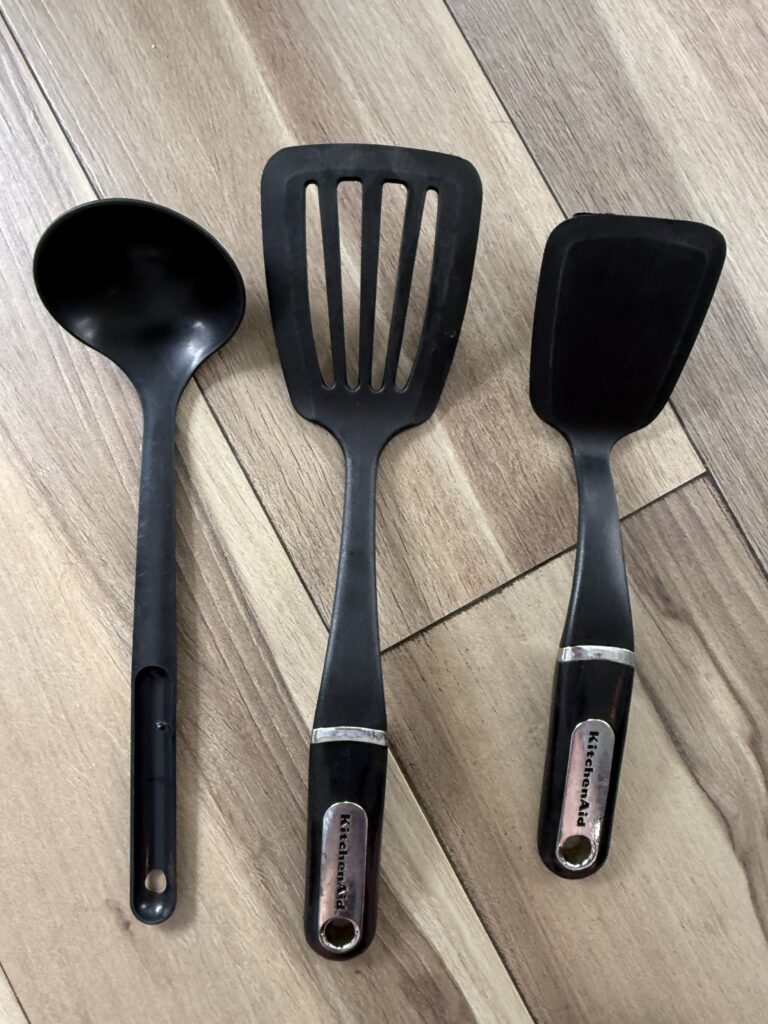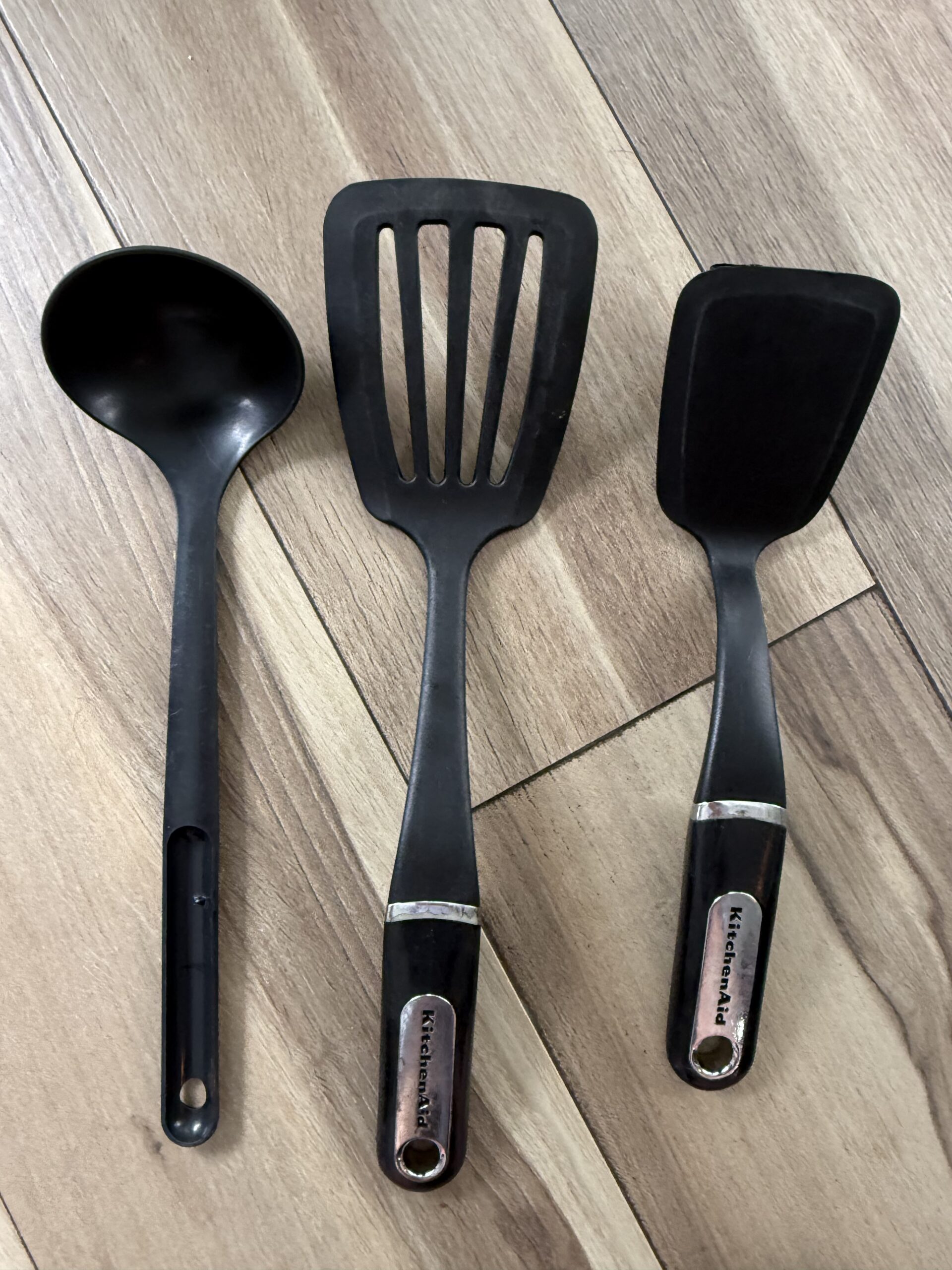My friend Leonor informed me she was getting rid of all her black plastic cooking utensils, such as spatulas, spoons and ladles, and replacing them with high-quality, hardwood utensils. She suggested it might be a topic for Foodie in Miami, so of course I researched it, as I hadn’t heard the alarm bells ring on this problem before.

It was easy enough to Google Black Plastic and find articles from Beyond Plastics, MSN and the New York Times regarding the subject. Black plastic is a hard color to make and it is typically not able to be recycled. So some black plastics, such as those often used in kitchen utensils, are made from recycled electronics mined from old T.V.s, computers, cell phones and monitors.
Who EVER thought THIS was a good idea?
While recycling is normally commendable, I’ll take my recycled plastics converted into park benches or sneakers, not in utensils I cook with in my kitchen. When cooking with high heats or acids, they are especially dangerous as the plastic can leach out.

“Black plastics are more likely to contain unregulated amounts of toxic chemicals, including heavy metals and flame retardants which can leach into food and pose a hazard to human health,” according to Beyond Plastics, an organizations seeking to end plastic pollution.
While I feel discussion about microplastics and their effects on our bodies and the environment has been all over the news lately, the danger of black plastics had flown under my radar. The black color is created by adding a substance called carbon black to plastic. Carbon black contains numerous compounds, some of which have proven carcinogenic to humans.

Scarier still, there are no current government regulations covering the safety of black plastic recycled items. Besides utensils, they are also found in coffee stirrers, forks, hot cup lids and take-out containers. Red Alert Red Alert! Or Black Alert, Black Alert!
Adverse health effects of flame-retardant chemicals may include: cancer, disruptions to hormone production and the body’s hormone system, negative effects of reproductive health and adverse effect to fetal and child development, according to the National Institutes of Health.
Egads!
What’s a person to do?
- Throw out your black plastic utensils pronto! To tell the difference between plastic and silicone (which for now is ok) tap it on a hard surface. If it clicks or clacks, it’s black plastic. If it’s more flexible, rubber-like and with a grippy texture, then it’s probably silicone.
- Never microwave food in black plastic!
- If you get take-out in black plastic, immediately transfer it into a glass or ceramic container.
- Avoid single-use hot cups with lids and single use black stir sticks.
- Bring your own metal or bamboo cutlery with you, so you aren’t reliant on whatever the restaurant has. I ordered a little packet from Amazon for about $10 that comes with a fork, knife, spoon, chopsticks and metal straw to take with me when I go out or travel.
What are you going to buy to replace all the black plastic items you are now going to throw away? The aforementioned high-quality hardwood is great, but for flipping eggs or more delicate cooking situations, wood isn’t the best material to accomplish this goal. So, as of now, silicone is recommended.
I hope I’ve given you enough evidence to convince you to Spring Clean your kitchen right now and say Bye Bye to Black Plastic forever!
Up Next: The Miami Breakfast Bowl
Discover more from Foodie in Miami
Subscribe to get the latest posts sent to your email.




